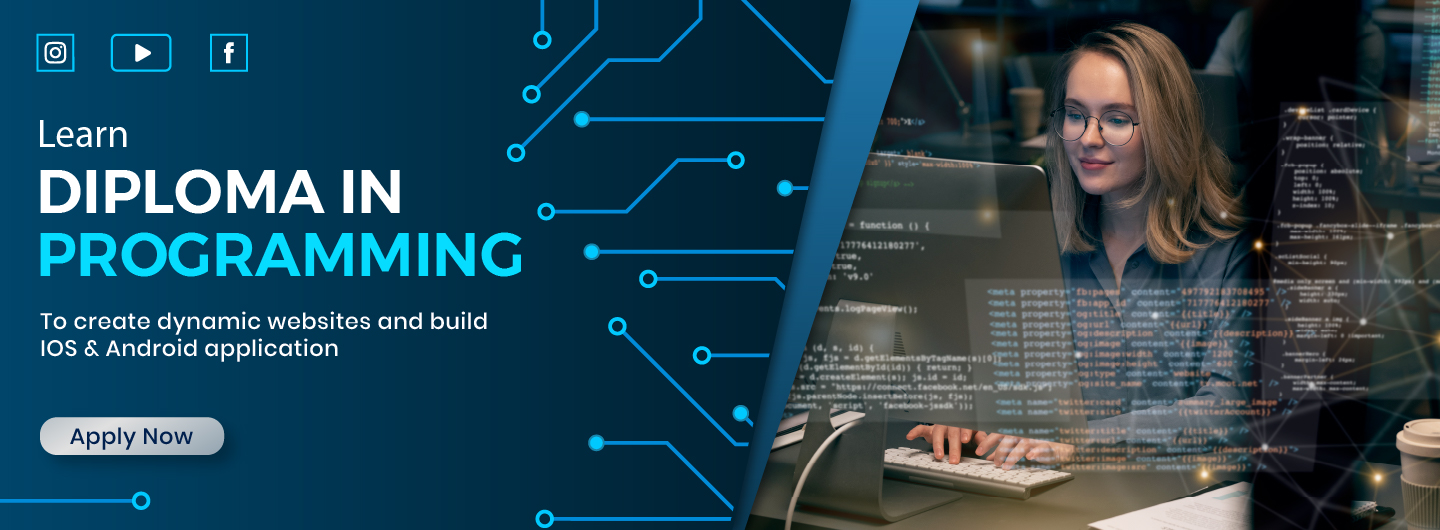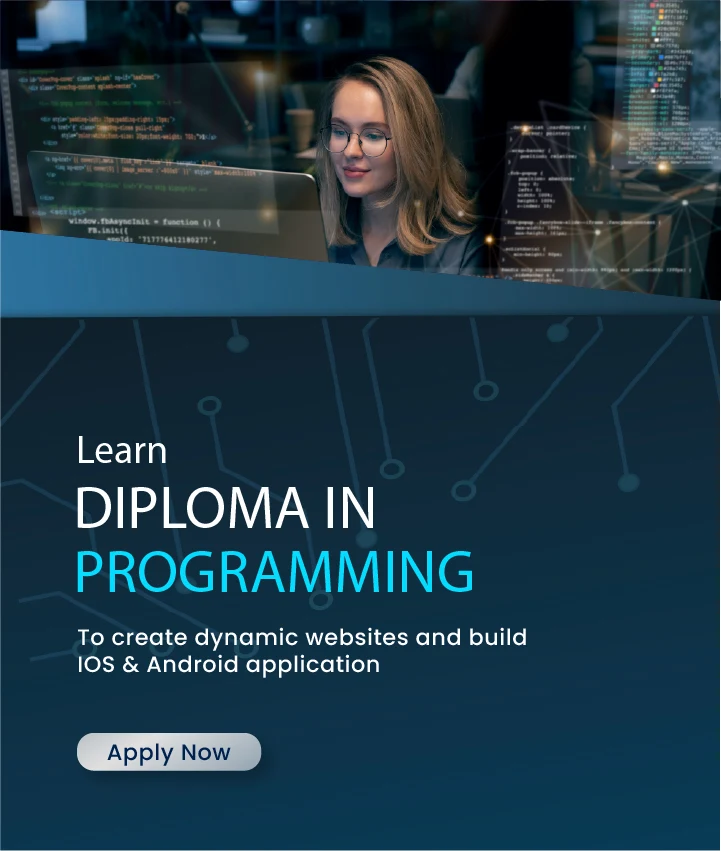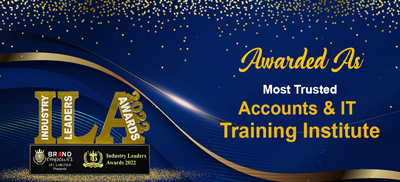C Programming Course
C language is a powerful multi-purpose programming language. It is one of the foundational languages of all programming languages. C programming is the best language to... read more


A diploma in programming course is a combination of different programming languages and ethical hacking. This course will teach the essential concepts and coding skills needed for Front-end, Back-end web development, Machine Learning, IOS, Android Development, and much more. It will also teach you about the basic concept of cyber security and ethical hacking, penetration testing and system hacking. DIP course enables you to become skillful in the IT sector by getting in-depth knowledge of IT tools or Web Development.
Course Highlights
1. |
Build dynamic and static websites |
2. |
Ethical Hacking with penetration testing |
3. |
In-depth knowledge of IT tools |
4. |
Developing android apps and software |
5. |
10+ Assignment |
6. |
5+ Live Projects |
7. |
12 Modules |
8. |
1 Year Free Backup Classes |


Learning Outcome
| • | You’ll be able to create websites and android apps. |
| • | You’ll be able to do efficient and effective work by using IT tools. |
| • | You’ll be able to optimize the web pages. |
| • | You’ll be able to Incorporate and examine information, process, and codes to investigate issues and recognize regions for development. |
| • | You will able to form various cryptographic techniques, their pragmatic relevance & weaknesses. |
| • | You’ll be able to build highly available and scalable internet applications. |
| • | You’ll be able to develop fast apps on any platforms. |
Language and tools that you will learn in this course

.webp)
.webp)





Course Content
Jobs You will Get After Completing Course
Programming is one of the most demanding fields in this digital era, There are millions of companies that need a developer to build their website, apps, and software within a time and secure their websites from hackers and much more. This course helps you to become skillful in this developing field and opens up multiple career opportunities after doing this course.
| Job profile After completing this course |
Average salary ( 1+ year experience) |
|---|---|
| Front-End Developer | 25k-50k |
| Back-End Developer | 35k- 70k |
| App Developer | 46k-55k |
| Software Developer | 41k- 100k |
| Ethical hacker | 41k- 50k |
| Full stack Developer | 50k-100k |

Backup Class

Flexible Timing

Fees Installment

Expert Trainer

100% job assistance

Free Library
.webp)
Live Project
.webp)
Practical learning

Hello,
My name is sarita,I'm student of IFDA institute. IFDA is the best computer training institute. Overall I love all the classes I have taken through IFDA institute,all the instructiors are kind and petient.They are very experienced in the program they are teaching.I have recommended this site to my school and friends. IFDA provides both practical and theoretical classes. Had a great experience here.☺️

I have a great experience in IFDA. The trainers are very supportive and explain every topic in detail. This Institute also provide backup classes on Saturday. I would like to suggest to join IFDA Institute to my friends and relatives. Thank u

I consider it very helpful because when when I first got into IFDA institute, it was very friendly and my knowledge in technology has gotten just not better but best. All the faculty here are very polite and ready to help whenever asked. Getting in this institute was my best decision.

2.5k +
Student

10k +
Trained

65+
Courses

130+
Batches
Frequently Asked Questions
There are no specific requirements for the DIP course. Anyone with a 12th pass and basic knowledge of computer applications can enroll in this course.
Yes, working as a Back End Developer is a smart choice. The Back End Developer's salary is very high. You will get a desirable position with decent compensation and daily learning opportunities.
We ensure placement assistance for our students who maintain their academic scores and are well-behaved throughout the course. Students also get to be interviewed by our recruiters from collaborating companies.
You do not need to have any maths or science prerequisites for pursuing this course from the IFDA Institute.
IFDA has emerged as the most encouraging & favorable institute in Delhi which is an ISO certified computer training institute ,started in the year of 2014. We provide various Govt. and Non Govt. Courses to all the desired students.
All the classes happening are based on practical learning so to ensure each student gets dedicated time and attention from the trainer we do not make a batch of more than 15 students at a time.
.webp)
.webp)
.webp)
.webp)




Get free counselling by our experience counsellors. We offer you free demo & trial classes to evaluate your eligibilty for the couse.
Have you
Any question
Or need some help?
Please fill out the form below with your enquiry, and we will respond you as soon as possible.